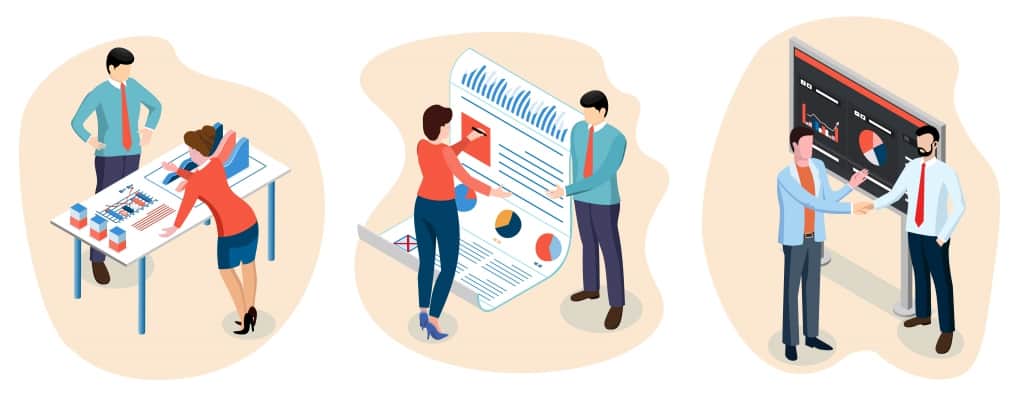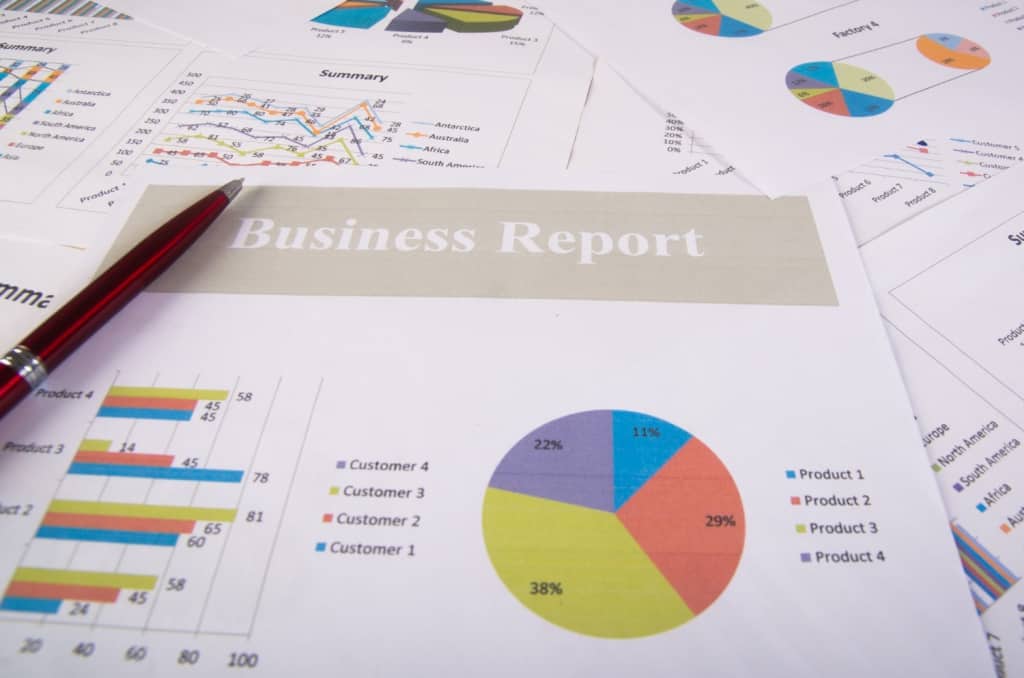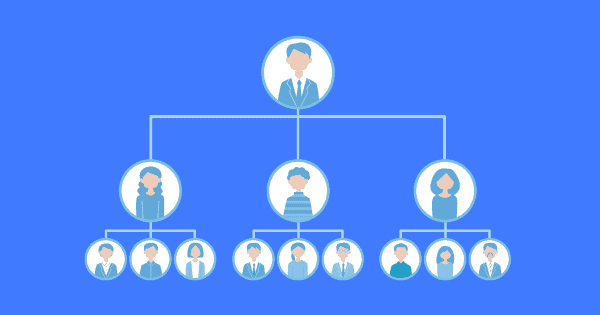Whether you’re managing projects, running a business, or working as a freelancer, the project plays a vital role in driving the growth of your business model. It offers a structured and systematic way to assess project performance, pinpoint areas that need improvement, and achieve optimal outcomes.
In this blog post, we’ll delve into project evaluation, discover its definition, benefits, key components, types, project evaluation examples, post-evaluation reporting, and create a project evaluation process.
Let’s explore how project evaluation can take your business toward new heights.
Table of Contents
Manaʻo kōkua no ka hoʻopili maikaʻi ʻana

Ke ʻimi nei i kahi ala pili e hoʻokele maikaʻi ai i kāu papahana?.
E kiʻi i nā mamana manuahi a me nā nīnau e pāʻani ai no kāu mau hālāwai e hiki mai ana. E kau inoa no ka manuahi a lawe i ka mea āu e makemake ai mai AhaSlides!
🚀 E hopu manuahi
He aha ka loiloi papahana?
Project evaluation is the assessment of a project’s performance, effectiveness, and outcomes. Hoʻopili ia i ka ʻikepili e ʻike ai inā ke kālailai ka papahana i kāna mau pahuhopu a hoʻokō i nā pae hoʻokō.
Ka loiloi papahana ʻoi aku ma mua o ke ana ʻana i nā huahana a me nā mea hoʻopuka; ke nānā nei i ka hopena holoʻokoʻa a me ka waiwai i hana ʻia e ka papahana.
By learning from what worked and didn’t, organizations can improve their planning and make changes to get even better results next time. It’s like taking a step back to see the bigger picture and figure out how to make things even more successful.
Pōmaikaʻi o ka loiloi papahana
Hāʻawi ka loiloi papahana i nā pōmaikaʻi nui e kōkua i ka holomua a me ka ulu ʻana o kahi hui, e like me:
- Hoʻomaikaʻi ia i ka hoʻoholo ʻana: Kōkua ia i nā hui e loiloi i ka hana o ka papahana, ʻike i nā wahi no ka hoʻomaikaʻi ʻana, a hoʻomaopopo i nā kumu e kōkua ai i ka holomua a i ʻole ka hāʻule ʻole. No laila hiki iā lākou ke hoʻoholo i ka ʻike e pili ana i ka hoʻokaʻawale ʻana i nā kumuwaiwai, ka hoʻonohonoho mua ʻana o ka papahana, a me ka hoʻolālā hoʻolālā.
- Hoʻonui ia i ka hana o ka papahana: Ma o ka loiloi papahana, hiki i nā hui ke ʻike i nā ikaika a me nā nāwaliwali i loko o kā lākou papahana. ʻAe kēia iā lākou e hoʻokō i nā hana hoʻoponopono e hoʻomaikaʻi i nā hopena o ka papahana.
- Kōkua ia i ka hoʻohaʻahaʻa i nā pilikia: Ma ka loiloi mau ʻana i ka holomua o ka papahana, hiki i nā hui ke ʻike i nā pilikia kūpono a lawe i nā hoʻonā e hōʻemi i ka hiki ke hoʻopaneʻe o ka papahana, ka hoʻonui kālā, a me nā pilikia ʻē aʻe i manaʻo ʻole ʻia.
- Hoʻolaha ia hoʻomaikaʻi mau: Ma ka nānā ʻana i nā hāʻule o ka papahana, hiki i nā hui ke hoʻomaʻemaʻe i kā lākou mau hana hoʻokele papahana, ʻo kēia ʻano hana i ka hoʻomaikaʻi ʻana e alakaʻi i ka hana hou, kūpono, a me ka holomua o ka papahana holoʻokoʻa.
- Hoʻonui ia i ke komo ʻana a me ka ʻoluʻolu o nā mea pili: Evaluating outcomes and gathering stakeholders’ feedback enables organizations to understand their needs, expectations, and satisfaction levels.
- Paipai ia i ka ʻike maopopo: Hiki ke haʻi ʻia nā hopena loiloi i nā mea e pili ana, e hōʻike ana i ka maopopo a me ke kūkulu ʻana i ka hilinaʻi. Hāʻawi nā hualoaʻa i kahi loiloi hoʻokō o ka papahana, e hōʻoia ana e kūlike nā papahana me nā pahuhopu hoʻolālā a hoʻohana pono ʻia nā kumuwaiwai.

Nā mea nui o ka loiloi papahana
1/ Clear Objectives and Criteria:
Project evaluation begins with establishing clear objectives and criteria for measuring success. These objectives and criteria provide a framework for evaluation and ensure alignment with the project’s goals.
Eia kekahi mau laʻana a me nā nīnau e hiki ke kōkua i ka wehewehe ʻana i nā pahuhopu a me nā pae hoʻohālike.
Nā nīnau e wehewehe i nā pahuhopu maopopo:
- He aha nā pahuhopu kūikawā a mākou e makemake ai e hoʻokō me kēia papahana?
- He aha nā hopena a i ʻole nā hopena i manaʻo ʻia e mākou?
- Pehea mākou e helu ai i ka holomua no kēia papahana?
- He ʻoiaʻiʻo a loaʻa nā pahuhopu i loko o nā kumuwaiwai a me ka manawa i hāʻawi ʻia?
- Are the objectives aligned with the organization’s strategic priorities?
Nā Laʻana o nā Koina Loiloi:
- Kūʻai-pono: Ka loiloi inā ua hoʻopau ʻia ka papahana ma loko o ka waihona kālā i hāʻawi ʻia a hāʻawi ʻia ka waiwai no ke kālā.
- 'alemanaka: Ka loiloi ʻana inā ua hoʻopau ʻia ka papahana ma loko o ka papahana i hoʻolālā ʻia a loaʻa i nā milestone.
- mea e like ai: E noʻonoʻo ana inā kūpono ka hoʻopuka a me nā hopena i nā kūlana maikaʻi i koho mua ʻia.
- Ka ʻoluʻolu o nā mea pili: Gather feedback from stakeholders to gauge their satisfaction level with the project’s results.
- Pākuʻi: Measuring the project’s broader impact on the organization, customers, and community.
2/ Data Collection and Analysis:
ʻO ka loiloi papahana kūpono e hilinaʻi i ka hōʻiliʻili ʻana i nā ʻikepili kūpono e loiloi i ka hana o ka papahana. Hoʻopili kēia i ka hōʻiliʻili ʻana i ka ʻikepili quantitative a qualitative ma o nā ʻano like ʻole e like me ka noiʻi, nīnauele, nānā, a me ka nānā ʻana i nā palapala.
The collected data is then analyzed to gain insights into the project’s strengths, weaknesses, and overall performance. Here are some example questions when preparing to collect and analyze data:
- What specific data needs to be collected to evaluate the project’s performance?
- He aha nā ʻano hana a me nā mea hana e hoʻohana ʻia no ka hōʻiliʻili ʻana i ka ʻikepili i koi ʻia (e laʻa, nā noiʻi, nā nīnauele, nā ʻike, ka nānā ʻana i nā palapala)?
- ʻO wai nā mea kuleana nui e pono ai e hōʻiliʻili i ka ʻikepili?
- Pehea e hoʻonohonoho ʻia a hoʻonohonoho ʻia ke kaʻina hana ohi ʻikepili e hōʻoia i ka pololei a me ka piha?
3/ Performance Measurement:
Performance measurement involves assessing the project’s progress, outputs, and outcomes about the established objectives and criteria. It includes tracking key performance indicators (KPIs) and evaluating the project’s adherence to schedules, budgets, quality standards, and stakeholder requirements.
4/ Stakeholder Engagement:
ʻO ka poʻe e pili ana he poʻe a i ʻole hui i hoʻopili pololei ʻia a pili ʻole paha e ka papahana a i ʻole makemake nui i kāna mau hopena. Hiki iā lākou ke hoʻokomo i nā mea kākoʻo o ka papahana, nā lālā o ka hui, nā mea hoʻohana hope, nā mea kūʻai aku, nā lālā kaiāulu, a me nā ʻaoʻao pili ʻē aʻe.
ʻO ka hoʻokomo ʻana i nā mea pili i ke kaʻina loiloi papahana ʻo ia ka hoʻopili ʻana iā lākou a me ka ʻimi ʻana i kā lākou mau manaʻo, manaʻo, a me nā ʻike. Ma ka hoʻopili ʻana i nā mea kuleana, e noʻonoʻo ʻia ko lākou mau manaʻo like ʻole a me nā ʻike, e hōʻoia ana i kahi loiloi piha.
5/ Reporting and Communication:
ʻO ka ʻāpana koʻikoʻi hope loa o ka loiloi papahana ʻo ia ka hōʻike a me ke kamaʻilio ʻana o nā hopena loiloi. Hoʻopili kēia i ka hoʻomākaukau ʻana i kahi hōʻike loiloi piha e hōʻike ana i nā ʻike, nā hopena, a me nā ʻōlelo paipai.
Effective communication of evaluation results ensures that stakeholders are informed about the project’s performance, lessons learned, and potential areas for improvement.

Nā ʻano o ka loiloi papahana
ʻEhā mau ʻano nui o ka loiloi papahana:
#1 – Performance Evaluation:
Ke nānā nei kēia ʻano loiloi i ka loiloi ʻana i ka hana o kahi papahana ma ke ʻano o kona pili ʻana nā papahana papahana, nā papa manawa, nā kālā, a nā kūlana maikaʻi.
Nānā ia inā hoʻokō ka papahana i kāna mau pahuhopu, hoʻopuka i nā hopena i manaʻo ʻia, a me ka hoʻohana pono ʻana i nā kumuwaiwai.
#2 – Outcomes Evaluation:
Outcomes evaluation assesses the broader impact and results of a project. It looks beyond the immediate outputs and examines the long-term outcomes and benefits generated by the project.
Manaʻo kēia ʻano loiloi inā ua hoʻokō ka papahana i kāna nā pahuhopu i makemake ʻia, hana nā hoʻololi maikaʻi, a kokua i nā hopena i manaʻo ʻia.
#3 – Process Evaluation:
Nānā ka loiloi kaʻina hana i ka pono a me ka pono o ke kaʻina hana hoʻokō. He loiloi i ka hoʻokele papahana papa kōnane, ʻano hana, a nā ala hoʻohana ʻia e hoʻokō i ka papahana.
Ke nānā nei kēia ʻano loiloi i ka ʻike ʻana i nā wahi no ka hoʻomaikaʻi ʻana i ka hoʻolālā papahana, ka hoʻokō, ka hoʻonohonoho ʻana, a me ke kamaʻilio.
#4 – Impact Evaluation:
Impact evaluation goes even further than outcomes evaluation and aims to determine the project’s pili kumu me nā loli a i ʻole nā hopena i ʻike ʻia.
Ke ʻimi nei ʻo ia e hoʻomaopopo i ka nui o ka hiki ke hoʻohālikelike ʻia ka papahana i nā hopena i loaʻa a me nā hopena, e noʻonoʻo ana i nā kumu o waho a me nā wehewehe ʻokoʻa.
* Note: These types of evaluation can be combined or tailored to suit the project’s specific needs and context.
Nā Laʻana Loiloi Pāhana
ʻO nā hiʻohiʻona loiloi papahana like ʻole:
#1 – Performance Evaluation
A construction project aims to complete a building within a specific timeframe and budget. Performance evaluation would assess the project’s progress, adherence to the construction schedule, quality of workmanship, and utilization of resources.
| ke keʻena | Ana/Hōʻike | Ua hoʻolālāʻia | ʻOiaʻiʻo | Kuhikahi |
| Papa Hana Hana | Loaʻa nā milestones | [Nā helu i hoʻolālā ʻia] | [Nā hiʻohiʻona maoli] | [Ka like ʻole o nā lā] |
| Ka maikaʻi o ka hana | Nānā pūnaewele | [Nā nānā i hoʻolālā ʻia] | [Nā nānā maoli] | [Ka helu like ʻole] |
| Hoʻohana waiwai | Hoʻohana kālā | [Pālākiō i hoʻolālā ʻia] | [Na lilo maoli] | [Ka like ʻole o ka nui] |
#2 – Outcomes Evaluation
Hoʻokō ka hui ʻoihana ʻole i kahi papahana hoʻomohala kaiāulu e pili ana i ka hoʻomaikaʻi ʻana i ka helu heluhelu heluhelu ma nā wahi pilikia. ʻO ka loiloi hopena e pili ana i ka loiloi ʻana i nā pae heluhelu heluhelu, ke hele ʻana i ke kula, a me ke komo ʻana i ke kaiāulu.
| ke keʻena | Ana/Hōʻike | Hana mua | Ma hope o ka hana ʻana | Hoʻololi/Ka hopena |
| Nā pae heluhelu | Heluhelu helu | [Nā helu helu mua] | [Nā helu ma hope o ka loiloi] | [Hoʻololi i nā helu] |
| Hele Kula | Nā moʻolelo hele | [Ke komo mua ʻana] | [Ka hele ʻana ma hope o ka hana ʻana] | [Hoʻololi i ka hele ʻana] |
| Ka Hoʻohui'āina | Nā noiʻi a i ʻole nā manaʻo | [Manaʻo manaʻo ma mua o ka hana ʻana] | [Manaʻo manaʻo ma hope o ka hana ʻana] | [Hoʻololi i ke komo ʻana] |
#3 – Process Evaluation – Project Evaluation Examples
An IT project involves the implementation of a new software system across a company’s departments. Process evaluation would examine the project’s implementation processes and activities.
| ke keʻena | Ana/Hōʻike | Ua hoʻolālāʻia | ʻOiaʻiʻo | Kuhikahi |
| Hoʻolālā Hoʻolālā | E hoʻolālā i ka pili | [Hoʻopili i hoʻolālā ʻia] | [Hoʻopili maoli] | [Ka like ʻole o ka pākēneka] |
| kamaʻilio | Manaʻo mai nā lālā o ka hui | [Manaʻo manaʻo i hoʻolālā ʻia] | [Manaʻo manaʻo maoli] | [Ka helu like ʻole] |
| aʻo | Nā loiloi kau aʻo | [Nā loiloi i hoʻolālā ʻia] | [Nā loiloi maoli] | [Ka like ʻole o ka helu helu] |
| E hoʻololi i ka mana | Hoʻololi i ka uku hoʻokomo | [Hoʻohana ʻia i hoʻolālā ʻia] | [Apono maoli] | [Ka like ʻole o ka pākēneka] |
#4 – Impact Evaluation
A public health initiative aims to reduce the prevalence of a specific disease in a targeted population. Impact evaluation would assess the project’s contribution to the reduction of disease rates and improvements in community health outcomes.
| ke keʻena | Ana/Hōʻike | Hana mua | Ma hope o ka hana ʻana | Ka hopena |
| Ka maʻi laha | Nā moʻolelo olakino | [Prevalence pre-intervention] | [Ka laha ma hope o ka hana ʻana] | [Hoʻololi i ka laha nui] |
| Nā Huaola Ola Kaiāulu | Nānā a loiloi paha | [Nā hopena ma mua o ka hana ʻana] | [Nā hopena ma hope o ka hana ʻana] | [Hoʻololi i nā hopena] |

Step-by-step To Create Project Evaluation
Eia kahi alakaʻi i kēlā me kēia ʻanuʻu e kōkua iā ʻoe e hana i kahi loiloi papahana:
1/ Define the Purpose and Objectives:
- E wehewehe pono i ke kumu o ka loiloi, e like me ka hana o ka papahana a i ʻole ke ana ʻana i nā hopena.
- Establish specific objectives that align with the evaluation’s purpose, focusing on what you aim to achieve.
2/ Identify Evaluation Criteria and Indicators:
- E hoʻomaopopo i ka loiloi loiloi no ka papahana. Hiki i kēia mau mea ke komo i ka hana, ka maikaʻi, ke kumukūʻai, ka hoʻopaʻa ʻana i ka papa hana, a me ka ʻoluʻolu o nā mea kuleana.
- E wehewehe i nā hōʻailona hiki ke ana ʻia no kēlā me kēia koina e maʻalahi i ka hōʻiliʻili ʻana a me ka nānā ʻana.
3/ Plan Data Collection Methods:
- E ʻike i nā ʻano hana a me nā mea hana e hōʻiliʻili ai i ka ʻikepili e like me nā noiʻi, nā nīnauele, nā ʻike, ka nānā ʻana i nā palapala, a i ʻole nā kumu ʻikepili i loaʻa.
- E hoʻolālā i nā nīnau nīnau, nā alakaʻi nīnauele, nā papa helu nānā, a i ʻole nā mea hana ʻē aʻe e hōʻiliʻili i ka ʻikepili kūpono. E hōʻoia i ka maopopo, pōkole, a me ka nānā ʻana i ka ʻohi ʻana i ka ʻike pili.
4/ E hōʻiliʻili i ka ʻikepili:
- E hoʻokō i nā ʻano hana hōʻiliʻili ʻikepili i hoʻolālā ʻia a hōʻiliʻili i nā ʻike e pono ai. E hōʻoia i ka hōʻiliʻili ʻana i ka ʻikepili i hana mau ʻia a pololei no ka loaʻa ʻana o nā hopena hilinaʻi.
- E noʻonoʻo i ka nui o ka laʻana kūpono a me nā mea e pili ana i ka ʻikepili.
5/ Analyze Data:
Ke hōʻiliʻili ʻia ka ʻikepili, e kālailai iā ia no ka loaʻa ʻana o nā ʻike koʻikoʻi. Hiki iā ʻoe ke hoʻohana i nā mea hana a me nā ʻenehana e wehewehe i ka ʻikepili a ʻike i nā ʻano, nā ʻano, a me nā ʻike nui. E hōʻoia i ka hoʻopili ʻana i ka loiloi me nā pae loiloi a me nā pahuhopu.
6/ Draw Conclusions and Make Recommendations:
- Based on the evaluation outcomes, conclude the project’s performance.
- E hana i nā ʻōlelo aʻoaʻo no ka hoʻomaikaʻi ʻana, e hōʻike ana i nā wahi kikoʻī a i ʻole nā hoʻolālā e hoʻonui ai i ka pono o ka papahana.
- E hoʻomākaukau i kahi hōʻike piha e hōʻike ana i ke kaʻina loiloi, nā ʻike, nā hopena, a me nā ʻōlelo paipai.
7/ Communicate and Share Results:
- E kaʻana like i nā hopena loiloi me nā mea pili a me nā mea hoʻoholo.
- E hoʻohana i nā ʻike a me nā ʻōlelo paipai e hoʻomaopopo i ka hoʻolālā papahana e hiki mai ana, ka hoʻoholo ʻana, a me ka hoʻomaikaʻi mau ʻana.
Ma hope o ka loiloi (Hōʻike)
Inā ua hoʻopau ʻoe i ka loiloi papahana, ʻo ia ka manawa no ka hōʻike hope e hāʻawi i kahi ʻike piha o ke kaʻina loiloi, nā hopena, a me nā hopena no nā papahana.

Eia nā mea e pono ai ʻoe e hoʻomanaʻo no ka hōʻike ʻana ma hope o ka loiloi:
- Hāʻawi i kahi hōʻuluʻulu pōkole o ka loiloi, me kāna kumu, nā ʻike nui, a me nā ʻōlelo paipai.
- E wehewehe i ke ala loiloi, me nā ʻano ohi ʻikepili, nā mea hana, a me nā ʻenehana i hoʻohana ʻia.
- Hōʻike i nā ʻike nui a me nā hopena o ka loiloi.
- E hōʻike i nā holomua nui, nā holomua, a me nā wahi e hoʻomaikaʻi ai.
- E kūkākūkā i nā hopena o nā ʻike loiloi a me nā ʻōlelo paipai no ka hoʻolālā papahana, ka hoʻoholo ʻana, a me ka hoʻokaʻawale ʻana i nā kumuwaiwai.
Nā Papahana Loiloi Pāhana
Here’s an overall project evaluation templates. You can customize it based on your specific project and evaluation needs:
| Introduction: – Project Overview: […] – Evaluation Purpose: [...] Nā Kaulike Loiloi: ʻOhi ʻikepili a me ka nānā ʻana: Nā Mea Loiloi: b. Ka Loiloi Nā Hualoaʻa: c. Loiloi Kaʻina Hana: d. Hoʻopili i nā mea pili: e. Ka Loiloi Ka hopena: Hōʻike a me nā manaʻo: Ka Hopena: |
Ke Kumu Loaʻa
He hana koʻikoʻi ka loiloi papahana e kōkua i ka loiloi i ka hana, nā hopena, a me ka pono o kahi papahana. Hāʻawi ia i ka ʻike waiwai e pili ana i nā mea i hana maikaʻi, nā wahi e hoʻomaikaʻi ai, a me nā haʻawina i aʻo ʻia.
A mai poina AlaAlides play a significant role in the evaluation process. We provide i hana mua ia me hiʻohiʻona hiʻohiʻona, which can be utilized to collect data, insights and engage stakeholders! Let’s explore!
FAQs
He aha nā ʻano 4 o ka loiloi papahana?
Ka Loiloi Hana, Ka Loiloi Nā Huakaʻi, Ka Loiloi Kaʻina Hana a me ka Impact Evaluation.
He aha nā ʻanuʻu o ka loiloi papahana?
Eia nā ʻanuʻu e kōkua iā ʻoe e hana i kahi loiloi papahana:
E wehewehe i ke kumu a me nā pahuhopu
E ʻike i nā Koina Loiloi a me nā hōʻailona
Hoʻolālā i nā ʻano ohi ʻikepili
E hōʻiliʻili i ka ʻikepili a me ka nānā ʻana i ka ʻikepili
E unuhi i nā manaʻo manaʻo
E kamaʻilio a kaʻana like i nā hopena
He aha nā mea 5 o ka loiloi i ka hoʻokele papahana?
Ka hōʻiliʻili ʻikepili a me ka loiloi
Ana Hana Hana
Hoʻopiʻi Pili
Hōʻike a kamaʻilio
Manaʻo Kōkua: Project manakia | Kaiāulu Eval | AHRQ








